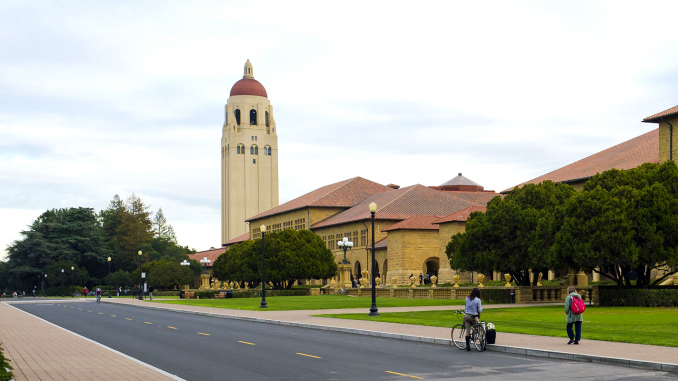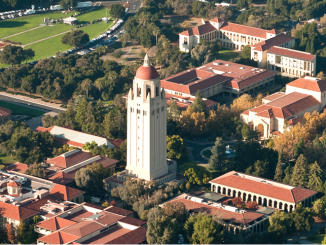
BY EMILY MIBACH
Daily Post Staff Writer
San Mateo County Manager Mike Callagy said Stanford’s decision yesterday (Nov. 1) to drop its General Use Permit (GUP) application may have been hard for the university, but in the end it is a win for county residents who will not have to deal with the problems caused by the university’s growth.
Callagy and a coalition of six San Mateo County cities — Menlo Park, East Palo Alto, Redwood City, Atherton, Woodside and Portola Valley — have been lobbying Stanford and Santa Clara County to give the coalition funds to mitigate the impacts of the expansion.
In an April letter to Santa Clara County, the coalition asked Stanford for $196 million for affordable housing in San Mateo County; $4.6 million to improve roads and intersections; $15 million for bicycle and pedestrian improvements; $5 million for flood prevention; and an expansion of Stanford’s free shuttle program.
Callagy said that Stanford did offer to fulfill at least some of San Mateo County’s requests, but only if the county backed the university’s request for a development agreement from Santa Clara County. Normally in Santa Clara County, a project is approved with the county grants a permit with conditions. Stanford wanted a development agreement to lock in the permit requirements so that the county couldn’t change them in the future.
“That’s not something we were going to be party to, and was something for Santa Clara County to work out with Stanford,” Callagy said.
Redwood City Vice Mayor Diane Howard, who was part of the San Mateo County coalition, said she was somewhat surprised and disappointed by Stanford’s decision.
Howard said the expansion would have impacted both counties “tremendously.”
Santa Clara County’s requests from Stanford were reasonable and fair, Howard said.
Howard said it’s her understanding that Stanford still has to finish building some of its allocation from the 2000 GUP, which allowed for more than 2 million square feet of academic facilities and 3,018 housing units. But Howard said she’s heard the 2000 GUP cap may be met in as soon as two years.
Piecemeal mitigation
At that point, Stanford could try to pass individual buildings through one at a time, which is what Menlo Park Mayor Ray Mueller is worried about.
“What may result is piecemeal mitigation that falls short of what is necessary to deal with the cumulative development impacts of the anticipated full buildout,” Mueller said.
If that is the case, Mueller said he has faith in Santa Clara County Supervisor Joe Simitian, who has led the county through both GUP processes in 2000 and 2019, and the rest of the board of supervisors, to work with the county’s planning department and make sure piecemeal mitigation does not occur.
What has come out of the GUP process for San Mateo County, and for that matter, Santa Clara County officials, is that now the two counties have a much stronger relationship, Callagy said.
Callagy said with this strengthened relationship, it can be expected that the two counties, and their cities, will be able to work together and come up with regional solutions for issues that impact the entire Peninsula.
In fact, such a collaboration may be on its way. On Tuesday, the Santa Clara County Board of Supervisors is slated to discuss creating a way to make it easier for the two counties to talk about and mitigate the impacts of large development projects. The East Palo Alto City Council is set to discuss the topic at its Thursday meeting.



It’s also a “win” for Palo Alto, Mountain View and Los Altos!
Don’t glorify what is essentially a shakedown. These cities were saying to Stanford ‘pay us and we’ll support your project’. It was nothing but a hustle at a high level.
Stanford probably thinks they can do better by funding the campaigns of candidates who will allow them to do what they want. Stanford always makes promises that it doesn’t keep. Given that, they want to have people administering land use that owe them and will look the other way.
In general, Stanford has always imposed costs on the surrounding cities without picking up the costs associated with their own expansions. E.g., the burden they put on the school districts (rather than building schools on campus), the loading on the infrastructure (from developing the Sand Hill Corridor), and so forth. Their business model is to maximize income (from the university, but more so, from practically tax free endowment investments) while shifting their cost of operation to the surrounding cities. People like Simitian are getting fed up with this, having seen it over and over. So they’ll try to get rid of Simitian.
Stanford’s founding grant prohibited the university from funding candidates. Stanford is one of the most stable employers in the Bay Area.Stanford provides huge secondary and tertiary economic benefits to the surrounding communities. Tell me faculty and staff who live in surrounding communities don’t paid sales taxes and spend money in their communities. Simitian is a just another career politician who determined that he gains votes by bashing Stanford. Check your facts.
lols. it’s not a “win” and gives you an idea that this was negotiated in bad faith. Stanford is the reason Silicon Valley exists today period. Stanford has generated immense wealth for the surrounding cities and land owners. certainly not a win. funny no similar concessions were ever demanded of Google, Apple, FB etc.